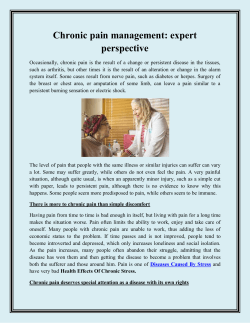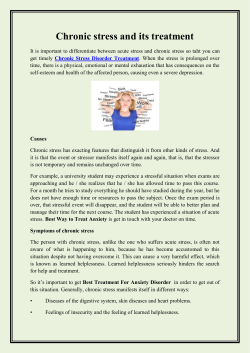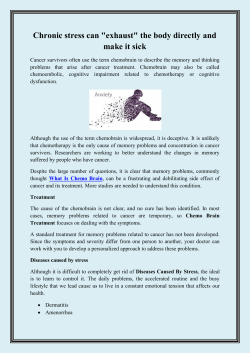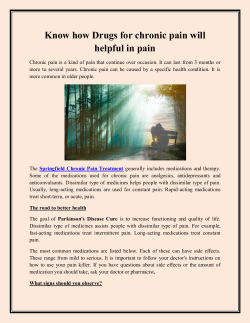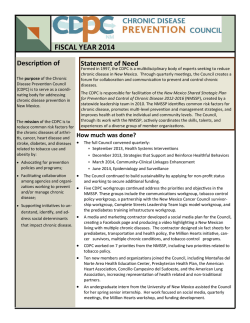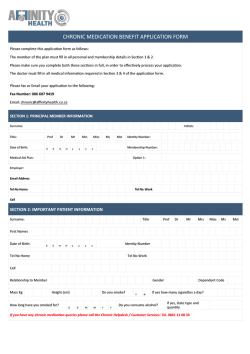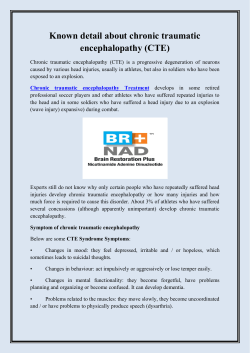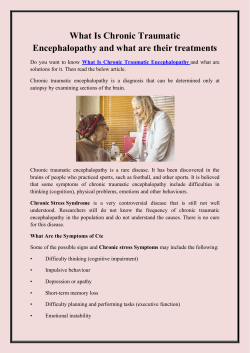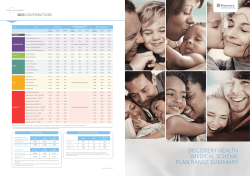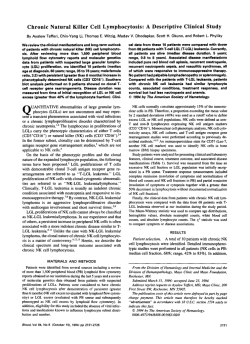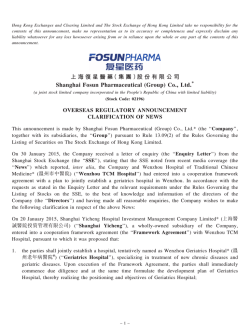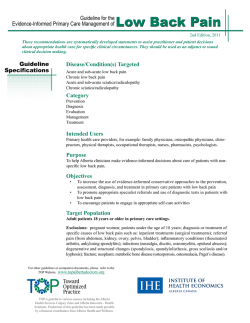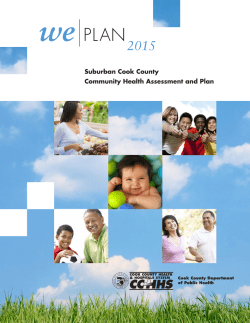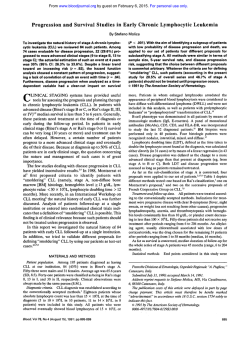
Geriatrics as a Model of the New Chronic Disease Paradigm
Geriatrics as a Model of the New Chronic Disease Paradigm Robert L. Kane, MD University of Minnesota School of Public Health Paradox: We are still practicing acute care medicine in a world of chronic disease 19th century models at the dawn of the 21st century Chronic Care: A Universal 21st Century Challenge WHO has developed a plan for worldwide attention to chronic care People with One or More Chronic Conditions Use: 72% of All Physician Visits No Chronic Conditions 55% One or More Chronic Conditions 45% 76% of All Hospital Admissions 80% of Total Hospital Days 88% of All Prescriptions 96% of All Home Care Visits n. 3 n. 2 Geriatrics as Model of Good Chronic Disease Care What is Needed? z Creative intolerance z Models of successful care z Environment that supports doing the right things Core of Geriatrics z Age-specific syndromes z Falls z Dementia/delirium z incontinence z Presentation z Management z Multiple, problem n. 4 simultaneous, interactive z Chronic disease n. 5 Goals of Chronic Disease Care Geriatrics as the Model for Chronic Disease Manage the disease as well as possible to reduce the extent and frequency of exacerbations. Prevent (or at least minimize) the transition from impairment to disability, and from disability to handicap. Encourage patient to play an active role in managing his/her disease but avoid allowing the disease to become the dominant force in the person’s life. z Chronic disease is THE major issue in health care z Current organization of health care is inappropriate Geriatrics = Chronic Care + Gerontology n. 7 n. 6 More Goals Provide care in a culturally sensitive manner. Integrate medical care with other aspects of life and care without medicalizing those aspects. n. 8 Health System Community Health Care Organization Resources and Policies SelfManagement Support Informed, Activated Patient and Caregiver Delivery System Design Productive Interactions Decision Support Clinical Information Systems Prepared, Proactive Practice Team n. 9 N Improved Outcomes Wagner, 1996 What is involved Definitions: Prevention z New definitions Prevention z Patients’ roles z Time z Place z z Prevent exacerbations z Reduce expensive utilization z New approaches Professional roles z Expectations z Information technology z Management z Integrating acute & LTC z z Prevent dysfunction z Avoid iatrogenic effects n.10 Definitions: Patients’ Roles n.11 Definitions: Time z 365/24/7 z Episode vs. Encounter z Pay-off horizon z Shared responsibility z Shared risk z Ongoing communication z Up-front investment recovered over time z Manage by change, not routine z Scheduling appointments z Length of appointments z Shared decision making z Need for better information n. 13 n. 12 Definitions: Place New Approaches: Professional Roles z Downward delegation z non-physicians z non-professionals z Chronic care occurs across locations z The same care can be provided in different settings z Primary care z simple cases z complex cases z New teams z specialists & non-physicians n. 14 n. 15 New Approaches: Expectations Observed Outcome Cure vs. Management z Measuring success z Expected z actual vs. expected Time n. 17 n. 16 New Approaches: Information Technology Problems with too much as well as too little information. Need to focus provider & patient attention on salient data Structured Data z Computerized flow sheets z Data displays combining status and treatment z Automated patient histories z Structured data bases with QoL items z Universal drug information z Structured ordering Validated protocols z z professional z patient & family Structured information z z Clinical glidepaths Just in time information z n. 19 n . 18 New Approaches: Management z Disease management z Often independent z Targeted z Patient self-care z Education z Motivation z Attitudinal change z Doctor-patient partnerships z Information based z Patient empowering z Group care New Approaches: Integrating Acute & LTC z Shared goals z Merged payment z Improved primary care z New service packages z Evercare z Outcomes accountability z Observed vs. expected n. 20 n. 21 Role of Evidence-based Medicine? Proven Chronic Care Strategies Are Not Used z Geriatric evaluation & management Observed Outcome z Interdisciplinary team care Expected z Discharge follow-up z Disease management z Group care Time z BUT NOT case management n. 23 No business case for good chronic care z Rewards for good care in market place are not as great as rewards for treating easy cases z Lots of discussion about quality but no real decisions based on it z Consumers not a potent force z Can’t recognize quality? z Don’t care? Payment Issues z Payment will not change the system on its own but it is a necessary re-enforcement z Proof of efficacy needed to implement BUT payment needed to sustain z Physicians expect to be paid for what they do z Fee-for-service payment is not compatible with chronic care principles z Pay for outcomes n. 24 n. 25 It Shouldn’t Be This Way: The Failure of Long-Term Care Conclusions Chronic disease is here to stay z More must be done to bring the health care z Robert L. Kane - Joan West - Vanderbilt University Press, 2005 system into alignment z Learn from experience with geriatrics z Need to foster creative intolerance; create/focus widespread discontent z Collect experience of health professionals There is good scientific evidence to show better z care is possible Changing the payment system is necessary but z not sufficient n. 26 n. 27 Our mission is to draw upon the unique credentials of health care professionals as both care recipients (either directly or indirectly) and subject matter experts to promote the changes needed for aligning our medical system better with chronic illness care. Our message to policymakers and health system leaders—If professionals working within the health care system are having serious problems with getting care for themselves and their families, then the system is failing in a major way. www.ppecc.org [email protected] n. 29 n. 28 Meeting the Challenge of Chronic Illness Robert L. Kane Reinhard Priester Annette Totten Johns Hopkins University Press, 2005 n. 30
© Copyright 2026
